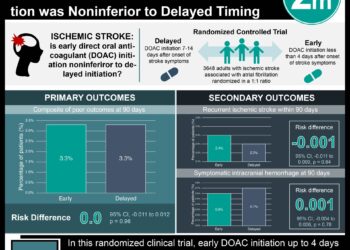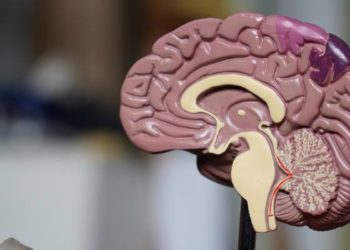#VisualAbstract: Thrombolysis Guided by Perfusion Imaging up to 9 Hours after Onset of Stroke
1. Patients presenting between 4.5 and 9 hours after stroke onset with viable brain tissue who received thrombolytic therapy had better neurological outcomes compared to those receiving placebo.
2. Symptomatic intracranial hemorrhage occurred in a higher number of patients in the thrombolysis group compared to placebo group.
Evidence Rating Level: 1 (Excellent)
Study Rundown: Guidelines for thrombolytic therapy after ischemic stroke recommend thrombolytic use within 4.5 hours of stroke onset. Imaging with CT and MRI methods are now able to determine whether brain tissue is viable after stroke, giving rise to the possibility of determining if patients should receive thrombolytic therapy based on tissue viability in addition to time since stroke. The EXTEND trial is a phase 3 randomized controlled trial evaluating functional outcomes of patients receiving alteplase or placebo between 4.5 and 9 hours from stroke onset. At 90 days since treatment, patients who received alteplase had better neurological outcomes compared to those treated with placebo. A higher number of patients receiving alteplase experienced symptomatic intracranial hemorrhage than in the placebo group.
This study provides strong evidence for considering information about tissue viability from imaging in deciding whether to administer thrombolytic therapy for patients with delayed hospital presentation after stroke. The study’s strengths are its randomized controlled design and use of either CT or MRI for tissue viability determination. The study was limited by the smaller than planned number of patients recruited for the trial.
Click to read the study in NEJM
©2019 2 Minute Medicine, Inc. All rights reserved. No works may be reproduced without expressed written consent from 2 Minute Medicine, Inc. Inquire about licensing here. No article should be construed as medical advice and is not intended as such by the authors or by 2 Minute Medicine, Inc







